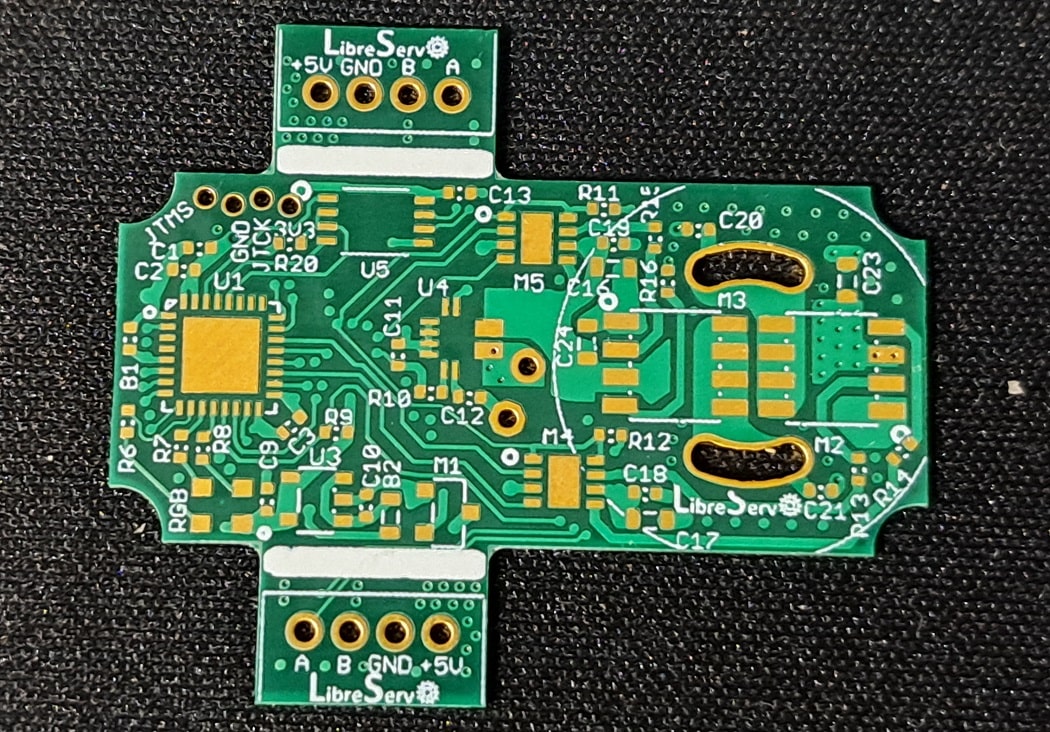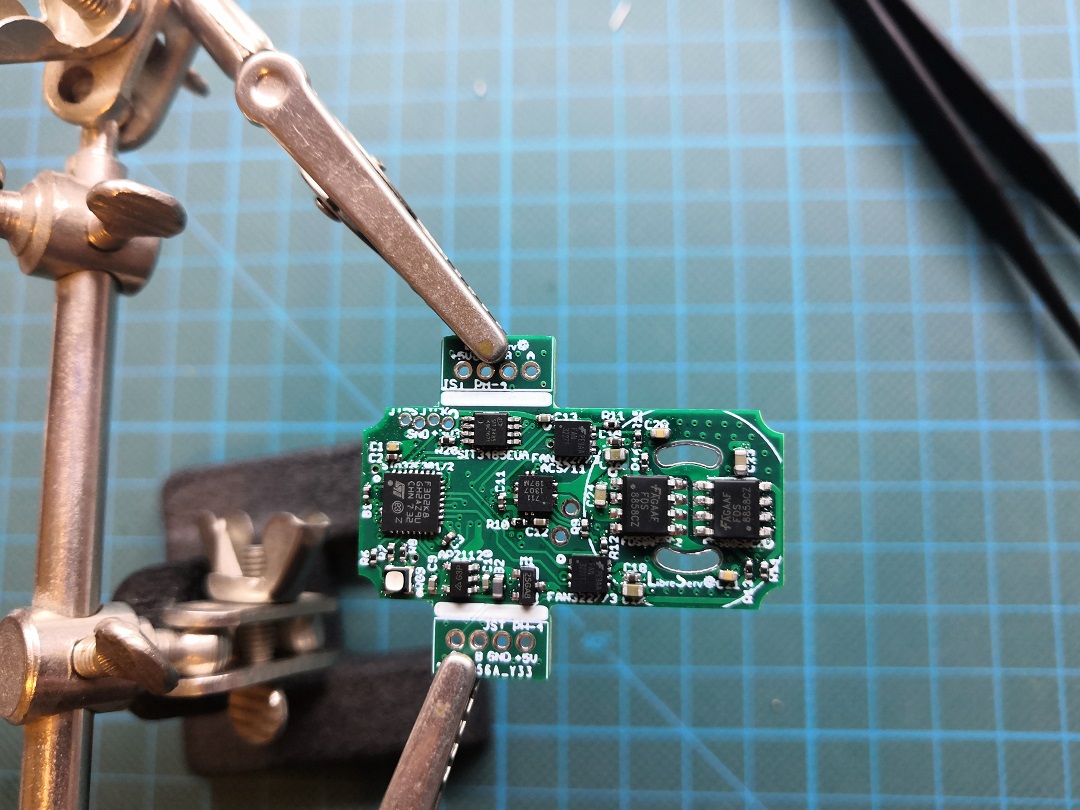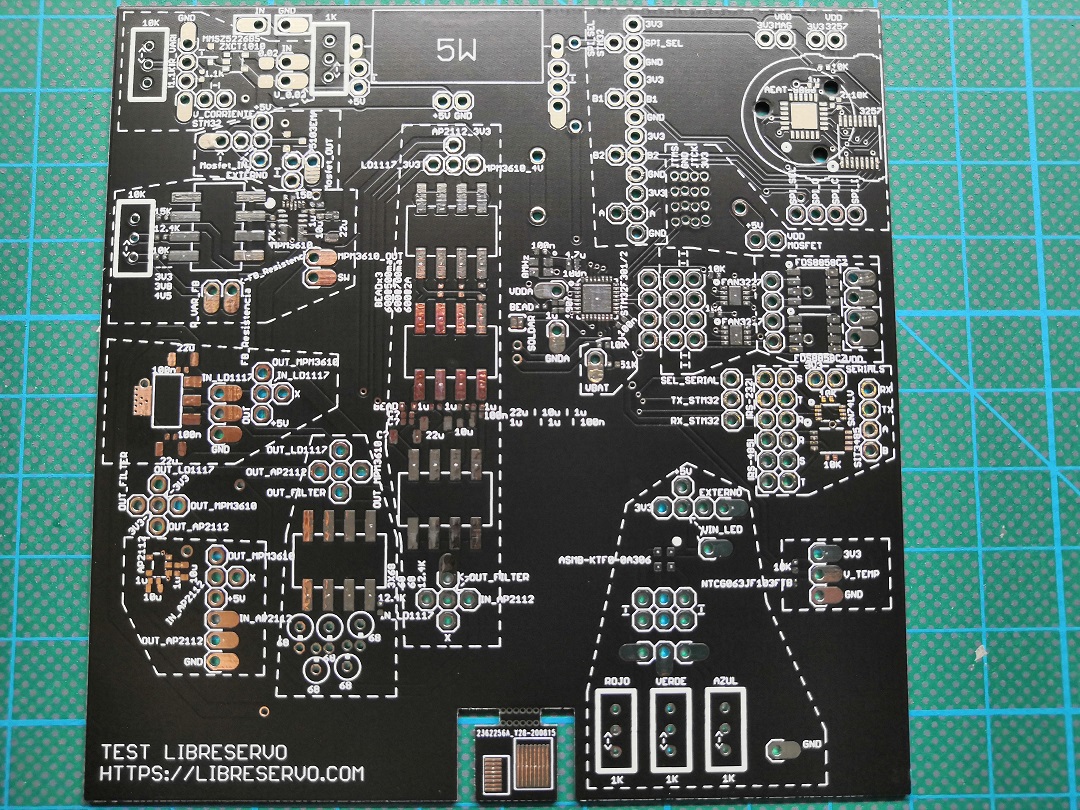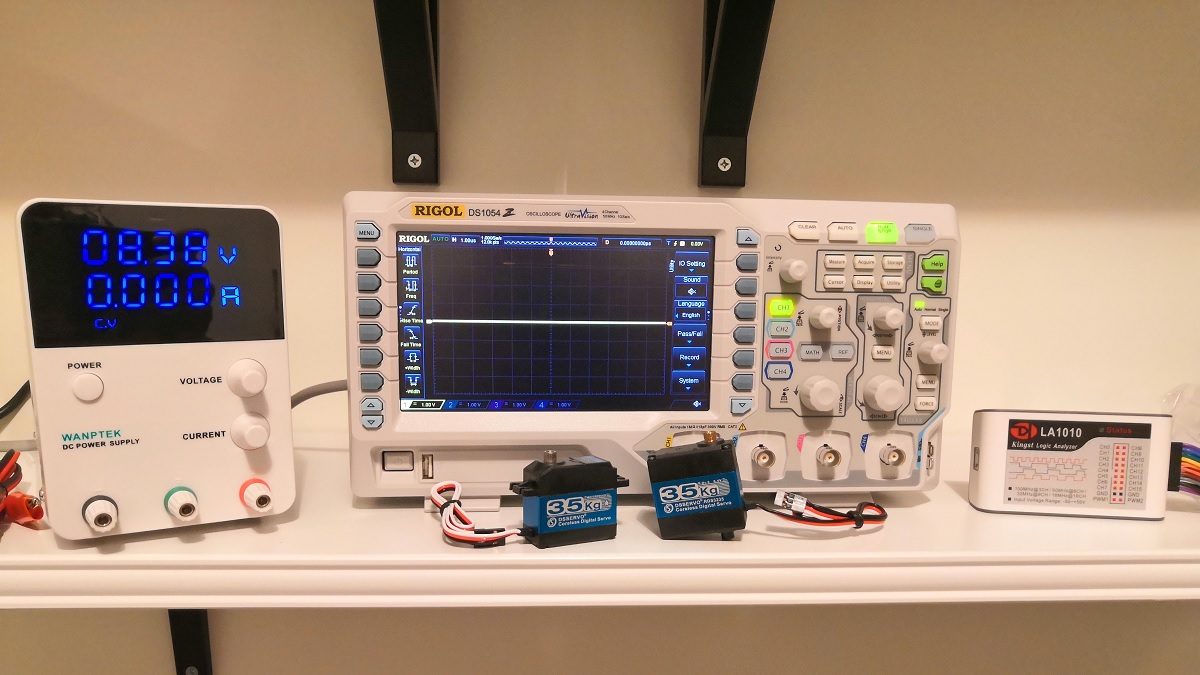Last minute changes at the time of manufacture the final version of LibreServo
🎉I have already sent to manufacture the final version of LibreServo to JLCPCB!🎉
In total there have been 50 PCB boards (50 because they were the same price as 30) of 0.8mm thick and of the highest possible quality; 6 layers, ENIG finish, epoxy filled and capped vias, PCB material upgraded to FR-4 TG155... Everything came out to me for about $93.24, which with VAT and shipping goes up to $118.18. That gives a base price of about $2.36 per LibreServo. Making the four-layer version of LibreServo, in HASL finish (with lead), FR-4 TG135-140 material and tracks simply covered with solder mask comes out to $56.20, which with VAT and shipping goes up to $75 for a total of $1.5 each LibreServo. Personally I think that making it in 6 layers and the rest of the improvements are well worth 0.86$ per board, but it is something that each one will have to value and that certainly LibreServo is going to work equally well in both configurations.


 New LibreServo v2.1
New LibreServo v2.1

 Soldering the first LibreServo v2
Soldering the first LibreServo v2
 LibreServo test PCB
LibreServo test PCB
 Nuevo material y herramientas para LibreServo
Nuevo material y herramientas para LibreServo